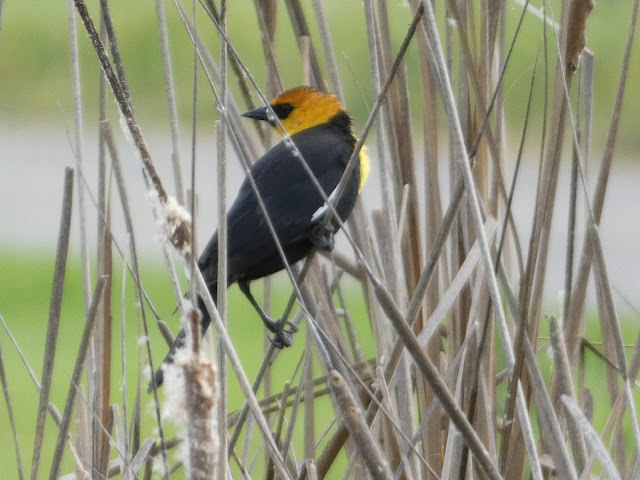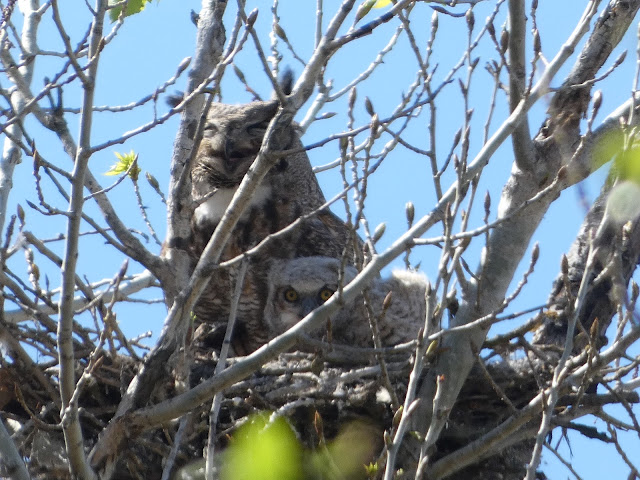It doesn't happen every year. Since Mrs. Geotripper and I have been birdwatching, we've found this incredibly beautiful bird only 10 times since 2018. So it's always a thrill when we catch sight of one. It's the Yellow-headed Blackbird (
Xanthocephalus xanthocephalus).
The birds are found in wetland environments all across the western states, but they generally aren't abundant in California according to
the e-bird sightings maps. In our region they are generally migrating to breeding grounds elsewhere, mainly in the high plains of the Midwest and Canada.
I've only seen the species twice in Stanislaus County. Our best luck has been a particular stretch of road on the Bear Creek Unit of the San Luis National Wildlife Refuge in Merced County a few miles south of Turlock. There's a 2.5-mile auto tour through some of the wetlands and we've seen the birds there six times over the last six years. Given that record we decided to give it a shot last week, and we were thrilled to catch at least nine of them preening and singing among the reeds.
One of the more unique traits of the Yellow-headed Blackbird is its song. It seems kind of like a trade-off with the beauty of the bird. It's described in several ways, but the screeching of torn metal works best for me. See what you think in the video that we captured...
Spring is a great time to see many of my favorite birds, which seem to be predominately yellow: Yellow Warblers, Bullock's Orioles, Hooded Orioles, Black-headed Grosbeaks (actually more orange I guess), and the Western Kingbirds. These Yellow-headed Blackbirds were special.









